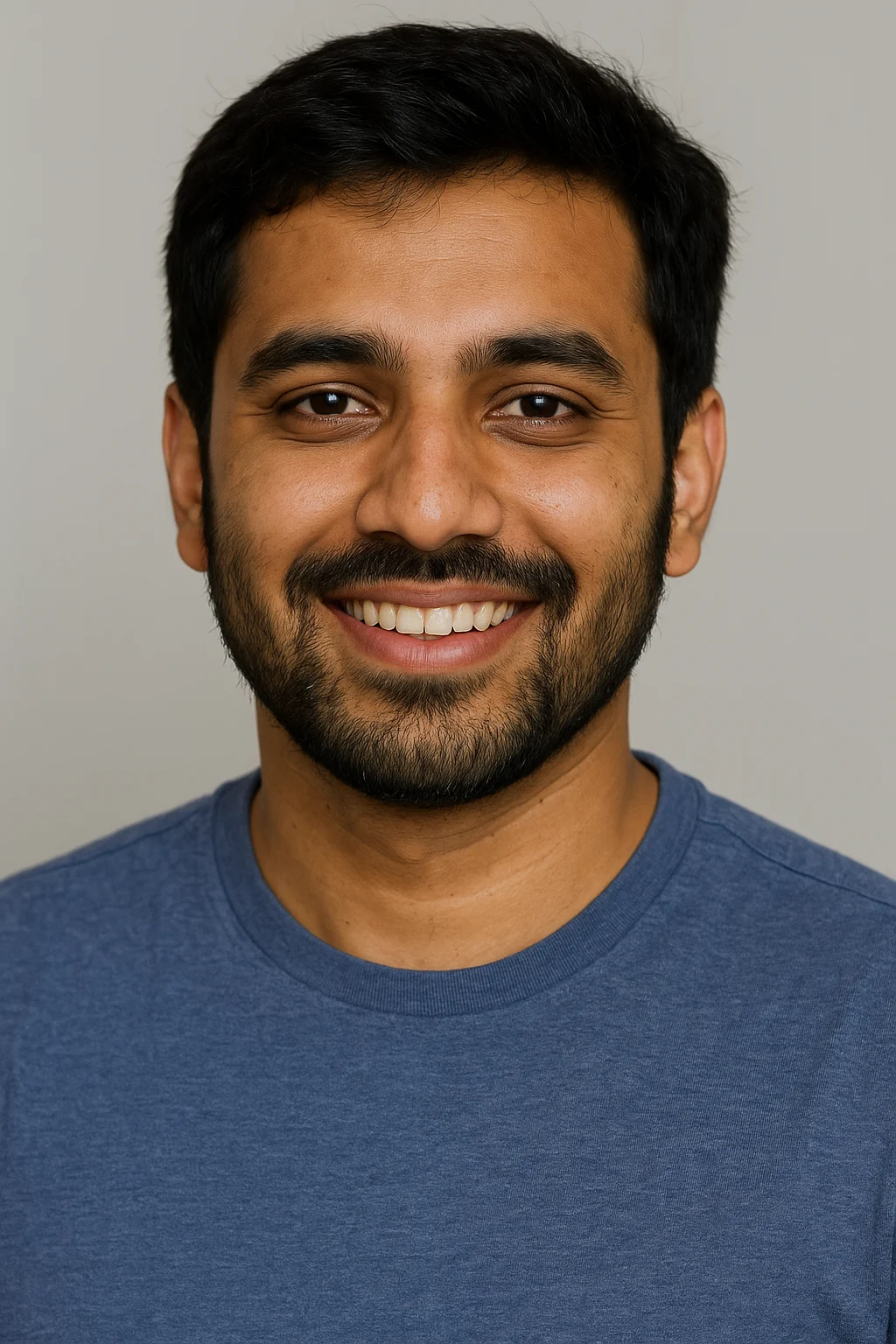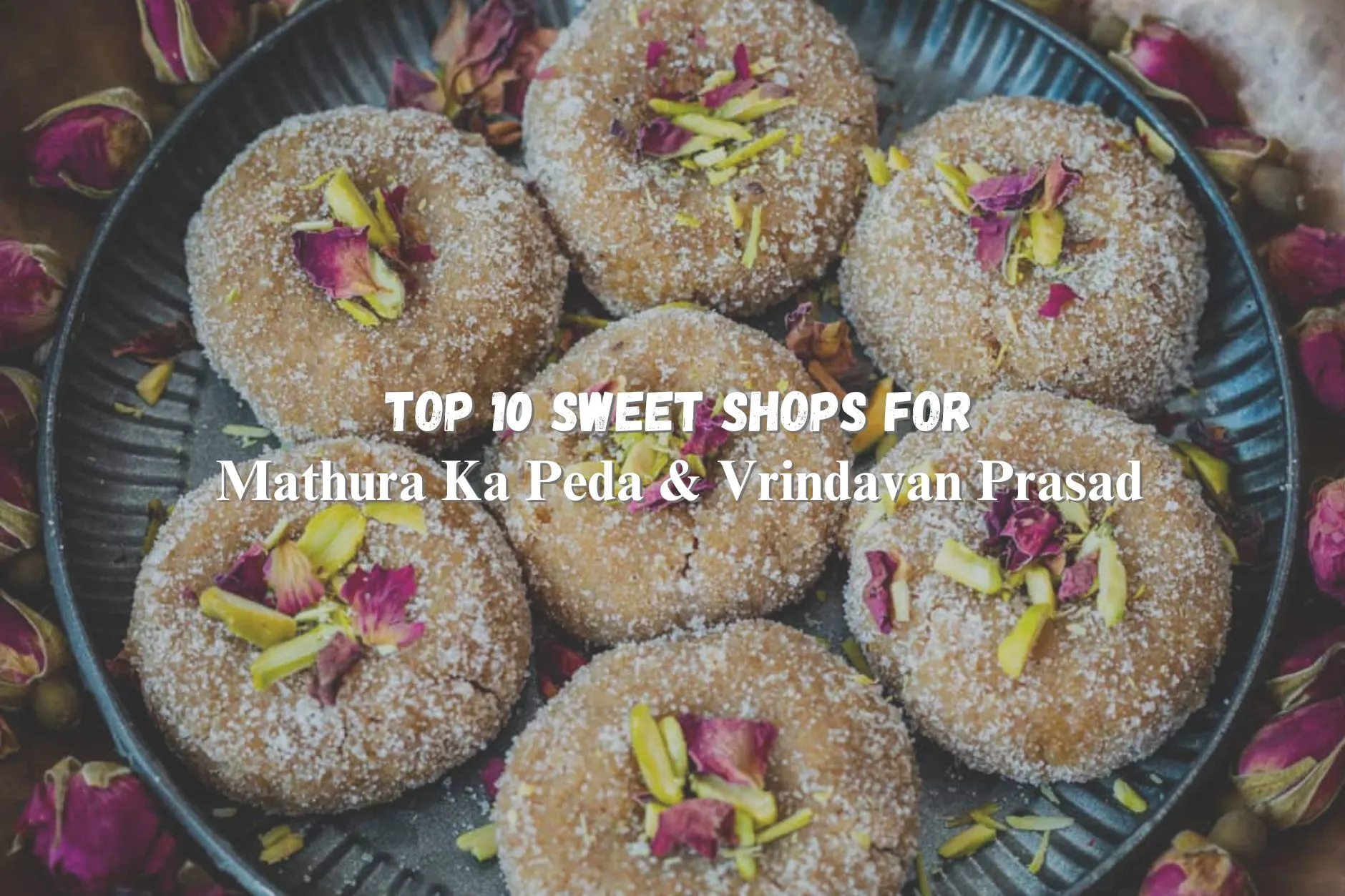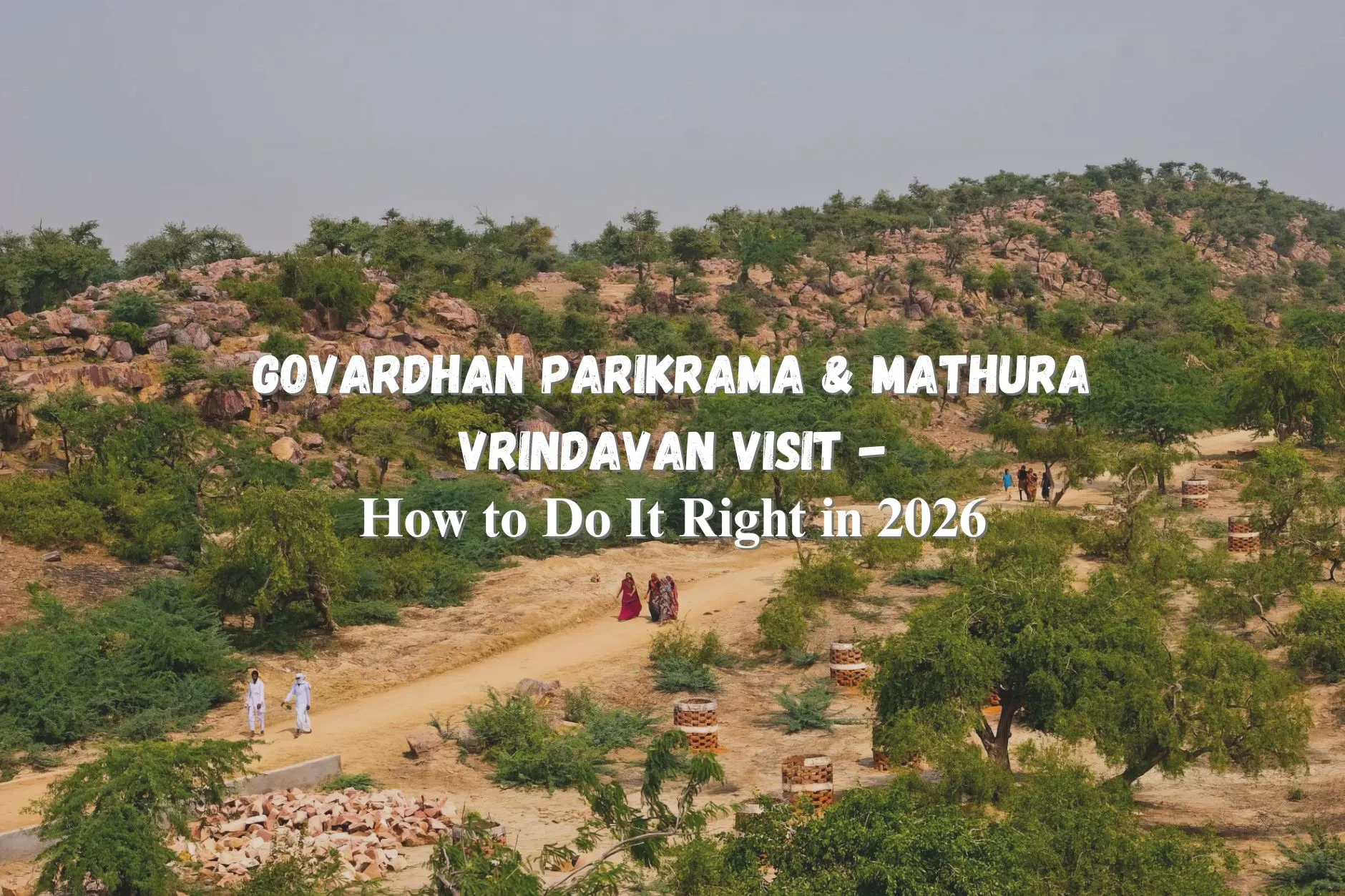Gokul is a sacred town on the Yamuna River, central to Lord Krishna’s childhood stories. It forms an essential part of any Mathura Vrindavan tour package, offering deep spiritual insights into Krishna’s early life.
Travelers searching for places to visit in Gokul, Gokul temples, Krishna childhood sites, and Gokul pilgrimage spots will find this destination rich in history and devotion.
Gokul sightseeing includes serene ghats, ancient temples, and sites linked to divine leelas, making it ideal for pilgrims and tourists exploring Uttar Pradesh’s Braj region.
In a Mathura Vrindavan tour package, Gokul provides a quieter alternative to the crowded spots in Mathura and Vrindavan.
Here, Krishna was raised by Nanda and Yashoda, away from dangers in Mathura. The town’s atmosphere is filled with bhakti, with daily aartis, bhajans, and stories from the Bhagavata Purana.
To explore these top places to visit in Gokul comfortably, reliable transportation is key. Mathura Taxi Service offers tailored tours for Mathura Vrindavan tour packages, including Gokul. Their services ensure timely pickups and drops, with drivers knowledgeable about local routes and sites.
Contact them at mathurataxiservice@gmail.com or +91 9634616363. Visit mathurataxiservice.com for bookings and details on customized Gokul sightseeing itineraries.
Exploring the Top Places to Visit in Gokul
Gokul’s attractions revolve around Krishna’s bal-leela, where he displayed divinity through simple acts. Each site offers unique experiences, from meditative ghats to vibrant temples. Plan your Gokul sightseeing to cover these in a day, starting from Mathura or Vrindavan.
1. Nand Bhawan: The Heart of Krishna’s Foster Home
Nand Bhawan, also called Nanda Yashoda Bhawan, is perched on a hillock overlooking Gokul. This is where Vasudeva smuggled baby Krishna from Mathura’s prison to safety under Nanda and Yashoda’s care. The site is alive with legends of Krishna’s infancy – his first cries, crawling on the floors, and the famous butter-stealing episodes known as makhan chori.
As one of the primary Gokul temples, Nand Bhawan features a small shrine with idols of Nanda, Yashoda, and child Krishna. Visitors can see a replica of Krishna’s cradle and preserved footprints believed to be divine. The hillock provides views of the Yamuna and surrounding fields, evoking the pastoral life of ancient Gokul. Daily rituals include morning mangala aarti and evening sandhya aarti, where priests chant slokas from the Bhagavata Purana.
Significance: Nand Bhawan symbolizes parental love and divine protection. It’s a must-visit for understanding Krishna’s transition from Mathura to Gokul, highlighting themes of devotion and safety in Hindu scriptures.
Best time to visit: Early morning to witness the aarti and avoid heat. Allocate 45-60 minutes here during your Gokul sightseeing.
Tips: Offer peda or mishri as prasad. Wear modest clothing, and if traveling with Mathura Taxi Service, request a stop for photography on the hillock.
“In the courtyard of Nanda’s house, the child Krishna brought endless delight to Yashoda’s heart.” – Adapted from Bhagavata Purana.
Integrating Nand Bhawan into your Mathura Vrindavan tour package allows reflection on how ordinary homes can become sacred through divine presence. Many devotees feel a surge of maternal affection here, akin to Yashoda’s.
2. Brahmand Ghat: Site of the Cosmic Revelation
Brahmand Ghat, located on the Yamuna’s banks, is famous for the miracle where Krishna revealed the entire universe in his mouth. When Yashoda saw Krishna eating mud and scolded him, he opened his mouth, showing stars, planets, and all creation – proving his Vishvarupa (cosmic form).
This ghat is among the most revered Yamuna ghats in Gokul, with steps leading to the river for ritual baths. Sadhus often narrate the story, and small shrines dot the area. The peaceful setting is perfect for meditation, with the river’s flow symbolizing life’s continuity.
Significance: It represents Krishna’s divinity hidden in childlike innocence, a key Krishna miracle place that teaches humility and wonder.
Best time to visit: Sunrise, when the Yamuna reflects golden hues, enhancing the spiritual ambiance. Spend 30-45 minutes dipping feet or performing puja.
Tips: Bring flowers for offering; avoid during monsoons due to high water levels. Mathura Taxi Service can arrange guided explanations en route.
“Through love alone can you conquer the divine, and in that conquest, find eternal bliss.” – Inspired by Bhagavad Gita.
In Gokul pilgrimage spots, Brahmand Ghat stands out for its blend of nature and mythology, making it essential in any Mathura Vrindavan tour package focused on miracles.
3. Raman Reti: The Playful Sands of Purification
Raman Reti, or “sands of delight,” is a vast sandy area where Krishna and Balram played as children. They wrestled, rolled in the dust, and tended cows, leaving imprints said to purify souls. Devotees roll in the sands to absolve sins, a ritual called reti kandoli.
The site includes ashrams where bhajans echo, and the soft sands underfoot evoke Krishna’s gopa life. It’s less structured than temples, offering open space for contemplation.
Significance: As a Krishna bal-leela site, it emphasizes joy in simplicity and spiritual cleansing through play.
Best time to visit: Early morning for cool sands and fewer visitors. Plan 30 minutes for rolling and prayers.
Tips: Remove shoes; collect sand in a small pouch as prasadam. Pair with nearby ghats for a full Gokul sightseeing loop.
“The inner self is the true Gokul where Krishna resides eternally for those on the spiritual path.”
Raman Reti adds a tactile element to places to visit in Gokul, ideal for families in a Mathura Vrindavan tour package.
4. Gokulnath Temple: Hub of Vaishnava Devotion
Gokulnath Temple, dedicated to Krishna as Gokulnathji, follows the Pushtimarg tradition. The black marble idol, adorned with jewels, depicts Krishna in his childhood form. Intricate carvings and daily seva (service) rituals highlight Vaishnava practices.
Evening aartis draw crowds with melodious kirtans, and the temple complex includes halls for discourses.
Significance: It’s a center for bhakti marg, preserving ancient texts and fostering community devotion.
Best time to visit: Evening for vibrant aarti. Allow 45 minutes.
Tips: Participate in prasad distribution; photography may be restricted inside.
“Beliefs shape a person’s destiny, just as devotion shaped Gokul’s sacred legacy.”
This temple enriches Gokul temples in your tour, offering cultural depth.
5. Thakurani Ghat: Yashoda’s Nurturing Waters
Thakurani Ghat is where Yashoda bathed Krishna daily, infusing routine with divinity. The ghat’s calm waters and surrounding greenery provide a serene spot for reflection.
Sadhus share tales of Krishna’s baths and playful splashes.
Significance: Represents maternal care in Krishna’s life, a subtle yet powerful devotion site.
Best time to visit: Sunrise for peaceful dips.
Tips: Listen to stories; offer milk as symbol of Yashoda’s love.
“From Mathura’s peril to Gokul’s embrace, Krishna’s journey was one of divine protection.”
Essential for emotional connection in Gokul pilgrimage spots.
6. Chaurasi Khamba Mandir: Architectural Symbol of Liberation
The 84-pillar temple, or Chaurasi Khamba Mandir, features pillars carved with Krishna leelas, each representing life’s 84 lakh yonis (birth forms) leading to moksha.
The open structure allows light to play on carvings, symbolizing enlightenment.
Significance: Teaches detachment and the path to liberation through Krishna’s stories.
Best time to visit: Anytime, preferably midday for light effects.
Tips: Count pillars with a guide; meditate on leelas.
“Act without attachment to fruits, and find freedom in duty.”
A unique addition to places to visit in Gokul for architecture lovers.
7. Yashoda Kund: Reservoir of Ancient Rituals
Yashoda Kund is a stepped water body where Yashoda bathed, surrounded by ruins hinting at Gokul’s antiquity.
Its tranquil waters are used for ablutions, evoking daily divine routines.
Significance: Links to nurturing aspects of Krishna’s childhood.
Best time to visit: Afternoon for shade.
Tips: Circumambulate the kund; seek silence.
“In Gokul’s waters and sands, tales of divine love unfold eternally.”
Complements ghats in Gokul sightseeing.
8. Chintaharan Mahadev Mandir: Dispeller of Worries
This Shiva temple, where Lord Shiva blessed infant Krishna, features a self-manifested linga. Devotees tie threads to release chinta (worries).
Significance: Symbolizes protection and harmony between Shaiva and Vaishnava traditions.
Best time to visit: During Shivratri for festivals.
Tips: Tie a thread with prayers; offer bilva leaves.
“In every age, I manifest to uphold righteousness and protect devotees.”
Rounds out Krishna childhood sites with interfaith elements.
Table: Top Places to Visit in Gokul
| Place Name | Key Significance | Best Time to Visit | Visiting Tips |
|---|---|---|---|
| Nand Bhawan | Foster home, makhan chori site | Morning | Offer sweets, enjoy hill views |
| Brahmand Ghat | Universe in mouth miracle | Sunrise | Meditate, perform river puja |
| Raman Reti | Play sands for purification | Early morning | Roll in sands, take prasadam |
| Gokulnath Temple | Vaishnava idol and aartis | Evening | Join kirtans, receive prasad |
| Thakurani Ghat | Yashoda’s bathing ghat | Sunrise | Hear legends, offer milk |
| Chaurasi Khamba Mandir | 84 pillars for moksha | Anytime | Study carvings with guide |
| Yashoda Kund | Bathing reservoir | Afternoon | Circumambulate for peace |
| Chintaharan Mahadev | Worry-removing Shiva shrine | Shivratri | Tie threads, offer leaves |
This table aids in planning Gokul attractions within your Mathura Vrindavan tour package.
Enhancing Your Journey with Mathura Taxi Service
Navigating Gokul’s sites requires efficient travel, especially in a comprehensive Mathura Vrindavan tour package. Mathura Taxi Service provides air-conditioned cabs, experienced drivers, and flexible schedules tailored to pilgrimage needs. They cover all top places to visit in Gokul, ensuring you don’t miss any Krishna leela sites or Yamuna ghats in Gokul.
From Mathura pickups to Vrindavan drops, their services include stops at lesser-known spots if requested. Safety and comfort are priorities, with clean vehicles and punctual service. For groups or solo travelers, they offer competitive options without hidden charges.
Contact Mathura Taxi Service at mathurataxiservice@gmail.com or +91 9634616363 to book. Explore packages on mathurataxiservice.com, which include Gokul darshan as part of broader Braj tours. Their expertise in local traffic and temple timings maximizes your time at each site.
Whether it’s a quick Gokul sightseeing trip or an extended stay, Mathura Taxi Service makes spiritual travel seamless. Many visitors praise their role in creating memorable Mathura Vrindavan tour packages focused on devotion.
Why Include Gokul in Your Mathura Vrindavan Tour Package
Gokul complements Mathura’s birthplace vibes and Vrindavan’s ras leela sites by focusing on childhood innocence. Visiting these places to visit in Gokul deepens understanding of Krishna’s life cycle, from birth to youth. The town’s serenity allows personal connections, away from commercial hustle.
Festivals amplify the experience – Janmashtami sees Nand Bhawan decorated lavishly, while Holi at Raman Reti revives playful traditions. Even off-season, the sites offer quiet introspection.
Practical advice: Start early from Mathura (15-20 km away), cover ghats first, then temples. Hydrate well, as summers are hot. Combine with Vrindavan for a full day.
In conclusion, Gokul’s top places to visit enrich any Mathura Vrindavan tour package with authentic bhakti. Embrace the leelas, absorb the quotes, and let the sites transform your journey. With Mathura Taxi Service handling logistics, focus on spiritual gains. Gokul isn’t just a destination; it’s a divine embrace waiting to unfold.
FAQs
1. Where is Gokul located?
Gokul is a small sacred town about 10 km from Mathura, on the banks of the Yamuna River. It’s closely connected to Lord Krishna’s childhood and is a key stop in most Mathura Vrindavan tour packages.
2. Why is Gokul famous among Krishna devotees?
Gokul is believed to be the place where Lord Krishna spent his early childhood with Nand Baba and Yashoda Maiya. The town is filled with temples and stories that bring those divine leelas (miracles) to life.
3. What are the top places to visit in Gokul?
The must-visit attractions include:
- Nand Bhawan (Nanda Palace)
- Raman Reti (sacred sand ground where Krishna played)
- Chaurasi Khamba Temple
- Gokul Nath Ji Temple
- Brahmand Ghat
4. What is special about Nand Bhawan?
Nand Bhawan is said to be the residence of Krishna’s foster parents. The palace, supported by 84 pillars symbolizing the Braj region, offers beautiful views of Gokul and holds deep spiritual significance.
5. What can I experience at Raman Reti?
At Raman Reti, devotees walk barefoot on the holy sand believed to bear the footprints of Krishna. Many sit in silence to meditate, feeling the calm energy of the place.
6. How can I reach Gokul from Mathura?
Gokul is just 20 minutes (≈10 km) from Mathura. You can hire a cab, auto-rickshaw, or e-rickshaw, or include it in your Mathura Vrindavan day tour itinerary.
7. What are the temple timings in Gokul?
Most temples open from 5 a.m. to 12 p.m. and again from 4 p.m. to 9 p.m. Morning and evening aartis are the best times to visit for a spiritual atmosphere.
8. What is the best time to visit Gokul?
The ideal months are October to March. The weather is pleasant, and festivals like Janmashtami and Holi fill the town with music, colors, and devotion.
9. How much time should I spend in Gokul during the tour?
Around 3–4 hours are enough to visit the main temples and ghats. If you wish to meditate or attend evening aartis, consider spending half a day.
10. Can Gokul be combined with other nearby destinations?
Yes. Travelers often pair Gokul with Mathura, Vrindavan, Govardhan, Nandgaon, and Barsana to complete a full Braj Bhoomi Yatra.






Leave a Reply